Plot
Timofey Berezin (Paddy Considine) works at a former top-secret, badly run and aged nuclear reprocessing facility plant in Skotoprigonyevsk-16, a former closed city and a naukograd. At the film's outset, he is exposed to radioactive contamination while selflessly trying to prevent a critical malfunction. The facility's managers tell him that his exposure was a survivable 100 rems, while accusing him of sabotage and suspending him without pay. Loyal coworkers, however, help Timofey discover the truth that he was exposed to 1,000 rems of radiation. Suffering from acute radiation poisoning, he has only days to live.
Before Timofey's adoring wife, Marina (Radha Mitchell), is fully aware of his fate, he leaves for Moscow, on a mission to secure a better future for her and their young son. He hooks up with a small-time gangster, Shiv (Oscar Isaac), in hopes of finding a buyer for a selfmade canister of a little over 100 grams of weapons-grade plutonium salt he has stolen. It is 1995, only a few years after the dissolution of the Soviet Union, and they spend their time frequenting the hotels, nightclubs and private palaces of the new Moscow underworld, ricocheting between two rival crime lords (Nikolaj Lie Kaas and Steven Berkoff). However, what Timofey and Shiv never realize is that they are both caught in the same dilemma: trying to find a way free of a certain fate; hoping to do right by their loved ones before it is too late.
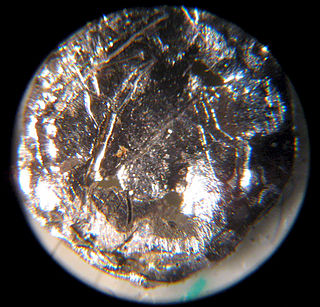
Americium is a synthetic chemical element; it has symbol Am and atomic number 95. It is radioactive and a transuranic member of the actinide series in the periodic table, located under the lanthanide element europium and was thus named after the Americas by analogy.
The actinide or actinoid series encompasses at least the 14 metallic chemical elements in the 5f series, with atomic numbers from 89 to 102, actinium through nobelium. The actinide series derives its name from the first element in the series, actinium. The informal chemical symbol An is used in general discussions of actinide chemistry to refer to any actinide.

Radioactive waste is a type of hazardous waste that contains radioactive material. Radioactive waste is a result of many activities, including nuclear medicine, nuclear research, nuclear power generation, nuclear decommissioning, rare-earth mining, and nuclear weapons reprocessing. The storage and disposal of radioactive waste is regulated by government agencies in order to protect human health and the environment.

Edwin Mattison McMillan was an American physicist credited with being the first to produce a transuranium element, neptunium. For this, he shared the 1951 Nobel Prize in Chemistry with Glenn Seaborg.
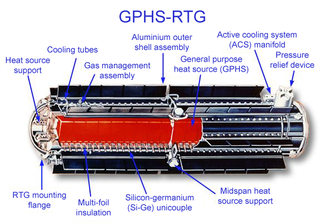
A radioisotope thermoelectric generator, sometimes referred to as a radioisotope power system (RPS), is a type of nuclear battery that uses an array of thermocouples to convert the heat released by the decay of a suitable radioactive material into electricity by the Seebeck effect. This type of generator has no moving parts and is ideal for deployment in remote and harsh environments for extended periods with no risk of parts wearing out or malfunctioning.

Sidney Aaron "Paddy" Chayefsky was an American playwright, screenwriter and novelist. He is the only person to have won three solo Academy Awards for writing both adapted and original screenplays.

Radha Rani Amber Indigo Ananda Mitchell is an Australian actress. She began her career on television, playing Catherine O'Brien on the Australian soap opera Neighbours (1996–1997), before transitioning to working in Hollywood. Known for her work in the action and thriller genres, she is the recipient of an FCCA Award, as well as nominations for Fangoria Chainsaw, AFI, and Screen Actors Guild Awards.

Patrick George Considine is an English actor, director, and screenwriter. He is known for playing antiheros in independent film. He has received two British Academy Film Awards, three Evening Standard British Film Awards, British Independent Film Awards and a Silver Lion for Best Short Film at the 2007 Venice Film Festival.
Uranium (92U) is a naturally occurring radioactive element that has no stable isotope. It has two primordial isotopes, uranium-238 and uranium-235, that have long half-lives and are found in appreciable quantity in the Earth's crust. The decay product uranium-234 is also found. Other isotopes such as uranium-233 have been produced in breeder reactors. In addition to isotopes found in nature or nuclear reactors, many isotopes with far shorter half-lives have been produced, ranging from 214U to 242U. The standard atomic weight of natural uranium is 238.02891(3).
Neptunium (93Np) is usually considered an artificial element, although trace quantities are found in nature, so a standard atomic weight cannot be given. Like all trace or artificial elements, it has no stable isotopes. The first isotope to be synthesized and identified was 239Np in 1940, produced by bombarding 238
U
with neutrons to produce 239
U
, which then underwent beta decay to 239
Np
.
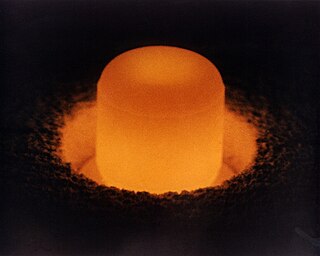
Plutonium-238 is a radioactive isotope of plutonium that has a half-life of 87.7 years.

Environmental radioactivity is not limited to actinides; non-actinides such as radon and radium are of note. While all actinides are radioactive, there are a lot of actinides or actinide-relating minerals in the Earth's crust such as uranium and thorium. These minerals are helpful in many ways, such as carbon-dating, most detectors, X-rays, and more.

Since the mid-20th century, plutonium in the environment has been primarily produced by human activity. The first plants to produce plutonium for use in cold war atomic bombs were at the Hanford nuclear site, in Washington, and Mayak nuclear plant, in Chelyabinsk Oblast, Russia. Over a period of four decades, "both released more than 200 million curies of radioactive isotopes into the surrounding environment – twice the amount expelled in the Chernobyl disaster in each instance".
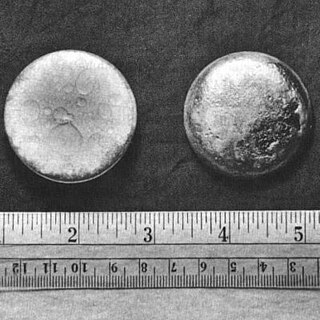
Plutonium is a chemical element; it has symbol Pu and atomic number 94. It is an actinide metal of silvery-gray appearance that tarnishes when exposed to air, and forms a dull coating when oxidized. The element normally exhibits six allotropes and four oxidation states. It reacts with carbon, halogens, nitrogen, silicon, and hydrogen. When exposed to moist air, it forms oxides and hydrides that can expand the sample up to 70% in volume, which in turn flake off as a powder that is pyrophoric. It is radioactive and can accumulate in bones, which makes the handling of plutonium dangerous.

This is a list of criminal acts intentionally involving radioactive substances. Inclusion in this list does not necessarily imply that anyone involved was guilty of a crime. For accidents or crimes that involved radioactive substances unbeknownst to those involved, see the Nuclear and radiation accidents and incidents.

Ken Kalfus is an American author and journalist. Three of his books have been named New York Times Notable Books of the Year.
Camille St. Cyr is an American television and film casting director.
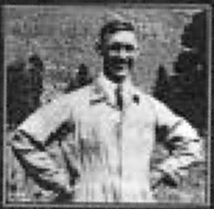
Albert Stevens (1887–1966), also known as patient CAL-1 and most radioactive human ever, was a house painter from Ohio who was subjected to an involuntary human radiation experiment and survived the highest known accumulated radiation dose in any human. On May 14, 1945, he was injected with 131 kBq of plutonium without his knowledge because it was erroneously believed that he had a terminal disease.

Child 44 is a 2015 mystery thriller film directed by Daniel Espinosa, written by Richard Price, and based on Tom Rob Smith's 2008 novel of the same name. The film stars an ensemble cast featuring Tom Hardy, Gary Oldman, Noomi Rapace, Joel Kinnaman, Paddy Considine, Jason Clarke, and Vincent Cassel. It was released on 17 April 2015. Both the novel and the film are very loosely based on the case of Soviet serial killer Andrei Chikatilo. The film was a box office bomb, grossing just $13 million against its $50 million budget.

Americium-241 is an isotope of americium. Like all isotopes of americium, it is radioactive, with a half-life of 432.2 years. 241
Am
is the most common isotope of americium as well as the most prevalent isotope of americium in nuclear waste. It is commonly found in ionization type smoke detectors and is a potential fuel for long-lifetime radioisotope thermoelectric generators (RTGs). Its common parent nuclides are β− from 241
Pu
, EC from 241
Cm
, and α from 245
Bk
. 241
Am
is not fissile, but is fissionable, and the critical mass of a bare sphere is 57.6–75.6 kilograms (127.0–166.7 lb) and a sphere diameter of 19–21 centimetres (7.5–8.3 in). Americium-241 has a specific activity of 3.43 Ci/g (126.91 GBq/g). It is commonly found in the form of americium-241 dioxide. This isotope also has one meta state, 241m
Am
, with an excitation energy of 2.2 MeV (0.35 pJ) and a half-life of 1.23 μs. The presence of americium-241 in plutonium is determined by the original concentration of plutonium-241 and the sample age. Because of the low penetration of alpha radiation, americium-241 only poses a health risk when ingested or inhaled. Older samples of plutonium containing 241
Pu
contain a buildup of 241
Am
. A chemical removal of americium-241 from reworked plutonium may be required in some cases.















